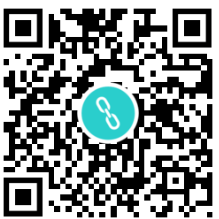一.介绍pyquery
上面介绍了Beautiful Soup的使用方法,会发现CSS选择器并没有那么强大,接下来
学习pyquery弥补了CSS选择器的
安装:
pip install pyquery
二.基本使用
html =''' <!DOCTYPE html> <html> <head> <title>故事</title> </head> <body> <p class="title" name="dromouse"><b>这个是dromouse</b></p> <p class="story">Once upon a time there were three little sister; and their names were <a href="http://www.baidu.com" class="sister" id="link1"><!--GH--></a> <a href="http://www.baidu.com/oracle" class="sister" id="link2">Local</a>and <a href="http://www.baidu.com/title" class="sister" id="link3">Tillie</a>; and they lived at the bottom of a well.</p> <p class="story">...</p> </body> </html> ''' from pyquery import PyQuery as pq #将对象pq传入参数进行初识化 doc = pq(html) #输出所有p标签内容 print(doc('p'))
可以直接传入URL
from pyquery import PyQuery as pq #将对象pq传入参数进行初识化 doc = pq(url="https://www.baidu.com") print(doc('title'))
请求文件也可以
import requests from pyquery import PyQuery as pq url = "https://www.baidu.com" #将对象pq传入参数进行初识化 doc = pq(requests.get(url).text) print(doc('title'))
文件初始化
from pyquery import PyQuery as pq #将对象pq传入参数进行初识化 doc = pq(filename="demo.html") print(doc('title'))
三.基本CSS选择器
1.基本使用
from pyquery import PyQuery as pq doc = pq(url="https://www.baidu.com") div = doc('.card .lazyload ') print(div)
2.查找节点
介绍一下查询函数,这些函数和jQuery中函数的用法完全相同
1.子节点
find()方法查找的是所有的子孙节点
from pyquery import PyQuery as pq doc = pq(url="https://www.baidu.com") div = doc('.card') #使用find查找标签 img = div.find('img') print(img)
只想查找子节点,那么可以用children()方法
from pyquery import PyQuery as pq doc = pq(url="https://www.baidu.com") div = doc('.card') #使用children查找直接子节点 img = div.children('a') print(img)
2.父节点
我们可以用parent()方法来获取某个节点的父节点(直接父节点)
from pyquery import PyQuery as pq doc = pq(url="") #首先定位子节点 items = doc('.fa') #子节点的直接父节点 contains = items.parent()
print(contains)
如果是祖父节点,也就是父节点的父节点使用parents()
from pyquery import PyQuery as pq doc = pq(url="https://.com") #首先定位子节点 items = doc('.fa') #子节点的祖父节点 contains = items.parents() print(contains)
3.兄弟节点
如果使用兄弟节点那么使用siblings()方法
from pyquery import PyQuery as pq doc = pq(url="") #首先定位元素 items = doc('.card-text') #兄弟节点,同级 contains = items.siblings() print(contains)
4.遍历
pyquery选择的可能是多个节点,也可能是单个节点,对于多个节点的结果,我们就需要使用遍历了
from pyquery import PyQuery as pq doc = pq(url="") #多个节点 list = doc('.card').items() print(type(list)) #遍历输出每一个 for div in list: print(div)
5.获取信息
节点我们说完了,那么我们就要获取节点中的信息了,获取文本或者获取属性
获取属性attr()
from pyquery import PyQuery as pq doc = pq(url="") #多个节点,加items()表示全部 img = doc('.card .lazyload').items() for i in img: #获取属性 img_href = i.attr('data-src') #img_href = i.attr.data-src print(img_href)
获取文本使用text()和html()
from pyquery import PyQuery as pq doc = pq(url="") #多个节点,加items()表示全部 infos = doc('.btn').items() for i in infos: #获取文本 info = i.text() #带有html的文本形式 info_html = i.html() print(info,info_html)
上面的attr(属性名,属性值),text("修改文本")和html("<a></a>")可以直接修改参数
6.节点操作
pyquery提供了一系列方法来对节点进行动态修改,比如为某个节点添加一个class,移除某个节点等。这些操作有时候会为提取信息带来极大的便利
addClass()和removeClass()这些方法动态改变节点的class属性
from pyquery import PyQuery as pq doc = pq(url="") #查询 img = doc('.card a img') print(img) #去除class为lazyload img.removeClass('lazyload') print(img)
7.移除remove()
remove()方法就是移除元素
from pyquery import PyQuery as pq html = ''' <div class="wrap"> Hello,world <p>This is a man</p> </div> ''' doc = pq(html) #获取hello world wrap = doc('.wrap') wrap.find('p').remove() print(wrap.text())
一些常用的方法append(),empty()和prepend()等方法,它们和jQuery用法完全一致
官方文档:http://pyquery.readthedocs.io/en/latest/api.html
8.伪类选择器
from pyquery import PyQuery as pq html = ''' <!DOCTYPE html> <html> <head> <title>故事</title> </head> <body> <p class="title" name="dromouse"><b>这个是dromouse</b></p> <p class="story">Once upon a time there were three little sister; and their names were <a href="http://www.baidu.com" class="sister" id="link1"><!--GH--></a> <a href="http://www.baidu.com/oracle" class="sister" id="link2">Local</a>and <a href="http://www.baidu.com/title" class="sister" id="link3">Tillie</a>; and they lived at the bottom of a well.</p> <p class="story">...</p> <ul> <li>1</li> <li>2</li> <li>3</li> <li>4</li> </ul> </body> </html> ''' doc = pq(html) li_f = doc("li:first-child") li_l = doc("li:last-child") li_n = doc("li:nth-child(2)") li_n = doc("li:nth-child(2n)") li_text = doc("li:contains(were)") li = doc("li:gt(2)")
学习网站:
